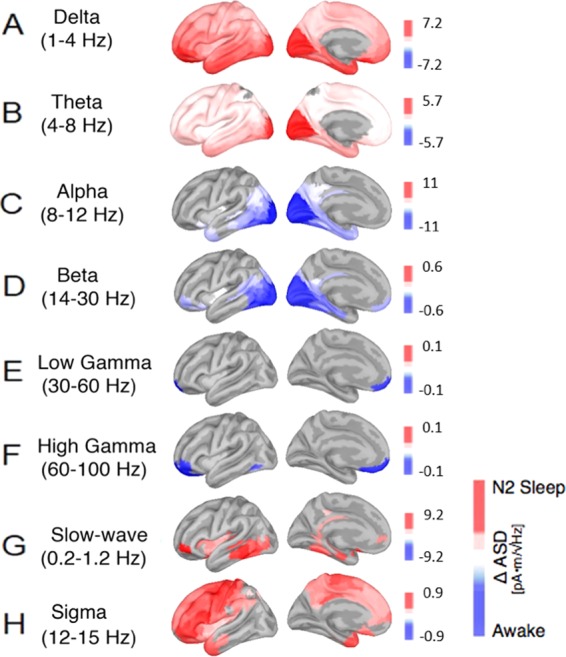Figure 2.

Cortical reconstructions of the neural sources for observed oscillatory patterns during N2 sleep in comparison to the awake resting state with closed eyes. Panels (A–H) show various general and sleep- specific frequency bands: (A) delta (1–4 Hz), (B) theta (4–8 Hz), (C) alpha (8–12 Hz), (D) beta (14–30 Hz), (E) low gamma (30–60 Hz), (F) high gamma (60–100 Hz), (G) slow wave oscillations (0.2–1.2 Hz) and (H) the sleep spindle spectrum (12–15 Hz). Red correspond to amplitude increases relative to the awake state, blue represent decreases in spectral amplitude in the respective frequency band; all activity changes are thresholded at p < 0.05, FDR-corrected.
